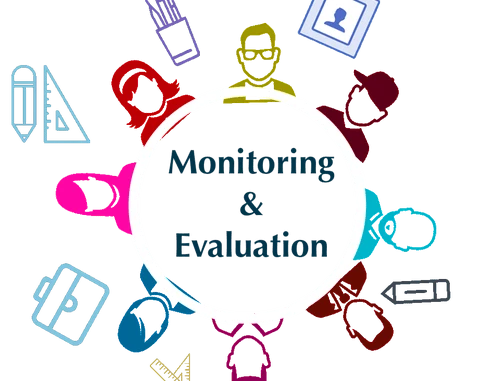
MONITORING and evaluation (M and E) is folded into programmes and projects to have a pulse on the overall health of the former and the latter.
While M and E are as necessary as water is to fish, the E part of the process often meets with stout resistance from managers in both private and public entities.
The E that is often repulsed by those in power is often seen as a disruptor of the status quo. Status quoers view the E of the M and E process as a spoiler that, in some way, seeks to pollute the quiet associated with the trappings that come with their titles or positions.
It is the object of this opinion piece to explore the unpopularity of the E with both State and private entities.
M and E is a unified process that is complementary and yet different in its focus on assessing the performance of a policy, programme and/or project. Monitoring per se concerns itself with tracking the progress of either a policy, programme or project.
A simple example of monitoring in a school system is the marking of a register of attendance by the teacher.
The marking of an attendance register can tell a story about a student’s attendance metrics, and this story can reveal an emerging trend of consistency in attendance or erratic attendance.
Concerning a project, monitoring can reveal or indicate the extent to which performance indicators are being met, resources injected into a project, time spent on an activity, alignment of inputs with activities and activities with outputs, among other things.
- The loathed E in monitoring and evaluation
Keep Reading
On the other hand, the E dimension of the M and E process comes with a tooth-pick analysis of a policy, programme or project.
For instance, in the above given example of an attendance register, monitoring may just show a trend of a child absenting himself or herself from school and an evaluation of the observed pattern of school attendance would be interested in asking why and what questions regarding the causes of such behaviour.
Evaluation, therefore, is more exploratory as it endeavours to unravel the structural, behavioural and attitudinal underpinnings of performance.
Essentially, an evaluation takes an extended look at the performance of a policy, programme and/or project and is interested in establishing its efficiency, effectiveness, relevance, sustainability, coherence with the ideas and ideals of stakeholders, and impact.
In toto, an evaluation gives feedback to all stakeholders and feedback is knowledge and knowledge is power that can be used for decisional matters concerning a policy, programme or project.
An evaluation can either be internal or external, formative (process) or summative (endline).
In Zimbabwe, there have been several impact evaluations on land reform, but the results of these land audits have not been for public consumption. Why? Why is a US$64 million question, which resonates with foundational questions of the E process.
By extension, the possible plausible reason as to why outcomes of evaluation reports on land reform and beneficiary populations thereto have not been regarded as a public good could be the disruptive nature of the findings.
For example, those people wielding social, political and economic power own multiple farms when everyday people of Zimbabwe are swimming and drowning in the jaws of abject poverty and penury.
The implications of the E in this example would suggest redistributive justice and redistributive justice would tilt the pendulum of structural power and power over something that is unpopular on the gravy train. Other implications of the E, where findings of the land reform are concerned in Zimbabwe, could be associated with a dip in political followership for the ruling party as vertical trust deficit would have been engendered by the E of land reform.
Additionally, the results of the land reform can mirror the Animal Farm plot, where some animals are more equal than others, through indicators of ownership experiences of natural capital.
The loathing of the E was also seen with the introduction of the Department of Government of Efficiency (DOGE) in the US with the inauguration of Donald Trump as the new State manager.
DOGE essentially was meant to deal with government excesses and waste, and one cannot establish excess and waste without carrying out an evaluation of government systems.
There was an outcry from individuals and agencies that already had a proclivity towards homo economicus, they saw their streams of revenue being evaluated against efficiency, effectiveness, coherence, relevance, sustainability, relevance and impact.
The E is disruptive; it disrupted USAid and poked holes into WHO. Trump made an evaluation of USAid in light of its value delivery to the everyday American and discovered that it was an unspeakably irrelevant drain on the fiscus of his country, hence the need to rethink its value.
Sometimes, the E is loathed by governments and private sectors because it may require the rejigging of institutions and governments and private sectors may not have the money to do so.
In the light of accountability and transparency, M and E are a sine qua non for policies, programmes and projects as it is important in giving feedback, which is critical for building strong institutions. Those who loathe the E of the process are, therefore, stone-age obstructionists.










